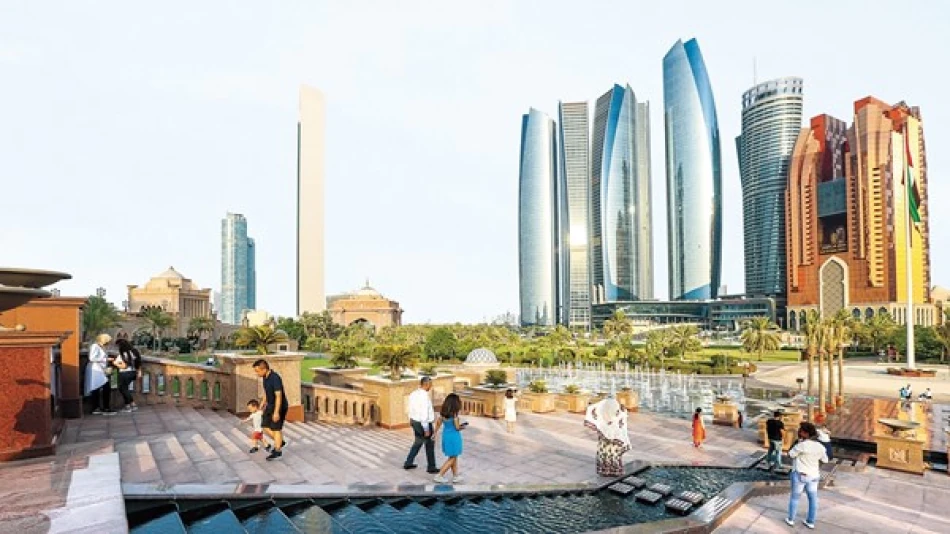
Abu Dhabi Hotels Shine: Soaring Occupancy Rates in June Reach Highest Levels Since 2009
Abu Dhabi Hotels Hit 15-Year High as Strategic Tourism Push Pays Off
Abu Dhabi's hospitality sector delivered its strongest June performance since 2009, with occupancy rates jumping over 5% and revenue per available room surging 15.5% year-on-year. The breakthrough month signals the emirate's tourism diversification strategy is gaining serious momentum, positioning it as a formidable rival to Dubai's dominance in the Gulf hospitality market.
Record-Breaking June Performance
According to CoStar data, Abu Dhabi hotels achieved a 71.9% occupancy rate in June 2025, driven by the Eid Al-Adha holiday period. The average daily rate climbed 10.1% to AED 496 ($135), pushing revenue per available room to AED 357.1 — the highest June figure in over a decade.
The market peaked on Sunday, June 6, when occupancy hit 91.5%, generating record daily revenue of AED 602.47 per available room. The following day saw the month's highest average daily rate of AED 663.71, demonstrating Abu Dhabi's ability to command premium pricing during peak periods.
Context: A Strategic Shift
This performance reflects Abu Dhabi's calculated pivot from oil dependency toward tourism and entertainment. Unlike Dubai's early tourism boom, Abu Dhabi has taken a more measured approach, focusing on luxury positioning and cultural attractions like the Louvre Abu Dhabi and upcoming Guggenheim.
Year-to-Date Momentum Building
The strong June figures cap off a solid first half of 2025. Through April, Abu Dhabi hotels welcomed 1.95 million guests — a modest increase from 1.93 million in the same period last year. However, total revenue jumped 20% to AED 3.14 billion, indicating successful yield management and premium positioning.
Monthly occupancy rates have remained consistently strong: 84% in January, 86% in February, 69% in March, and 87% in April, averaging 81.5% across the four-month period. This stability contrasts with the volatile patterns seen in other regional markets recovering from pandemic impacts.
Market Diversification Strategy
Abu Dhabi's guest composition reveals a well-diversified strategy. Asian markets (excluding Arab countries) led with 149,000 visitors in April, followed closely by European guests at 148,000. Domestic UAE travelers represented 18.5% of the total with 97,000 guests, while GCC visitors contributed 33,000.
This diversification mirrors Singapore's approach to tourism recovery — avoiding over-reliance on any single market while building sustainable long-term demand. The strong European numbers particularly stand out, suggesting Abu Dhabi is successfully competing with traditional Mediterranean destinations.
Investment Implications
For hospitality investors, Abu Dhabi's performance metrics suggest a maturing market with pricing power. The emirate's 172 hotels containing 34,383 rooms represent significant supply, yet operators are achieving both high occupancy and rate growth — a combination that typically signals healthy market fundamentals.
The revenue growth outpacing guest number increases indicates Abu Dhabi has moved beyond the volume-driven recovery phase into value optimization. This positions the market favorably for hotel investors seeking stable, premium-positioned assets in the Gulf region.
Regional Competition Dynamics
Abu Dhabi's June surge comes as regional tourism competition intensifies. Saudi Arabia's massive tourism investments under Vision 2030 and Qatar's post-World Cup positioning create pressure for established Gulf destinations to innovate and differentiate.
However, Abu Dhabi's focus on cultural tourism and business travel — rather than purely leisure-driven demand — provides defensive characteristics. The emirate's government meetings and corporate travel segments offer more predictable demand patterns compared to leisure-heavy markets.
Looking Forward
The June performance suggests Abu Dhabi's tourism strategy is reaching an inflection point. Strong rate growth combined with healthy occupancy indicates the market can absorb future supply additions while maintaining profitability — crucial as several major hotel projects near completion.
For the broader Gulf hospitality sector, Abu Dhabi's success demonstrates that differentiated positioning and patient capital deployment can create sustainable competitive advantages, even in a region where tourism infrastructure investment has accelerated dramatically across multiple markets.
Most Viewed News

 Layla Al Mansoori
Layla Al Mansoori






